#Shigeru Amachi
Text

Poster for the Nemuri Kyōshirō film Sleepy Eyes of Death 8: Sword of Villainy (1966).
This time around everyone's favorite nihilist ronin discovers a plot by disgruntled Samurai to destroy oil refineries and burn down Edo Castle (and probably the rest of Edo while at it).
Will Nemuri and his fabled sword technique, the Full Moon Cut, be able to stop the plot and save the day?
This film is followed by six more in the series, so you tell me.
#Sleepy Eye of Death 8: Sword of Villainy#Sleepy Eyes of Death#Son of the Black Mass#Nemuri Kyōshirō#Raizo Ichikawa#Shigeru Amachi#Shiho Fujimura#chambara#jidaigeki#samurai#ronin#Daiei Film
8 notes
·
View notes
Text
Celebrating episode 300, your deadicated hosts travel to Japan for Nobuo Nakagawa's masterpiece JIGOKU (1960)! The film stars Shigeru Amachi, Yoichi Numata and Utako Mitsuya.
Your hosts discuss nihilism, Buddhism, gore and more in this landmark episode.
Context setting 00:00; Synopsis 36:08; Discussion 49:48; Ranking 1:22:57
#podcast#horror#japanese horror#japanese gore#nobuo nakagawa#shintoho#jigoku#buddhism#the sinners of hell#shigeru amachi#yoichi numata#utako mitsuya#hiroshi izumida#kiyoko tsuji#akiko ono#hiroshi hayashi#kimie tokudaij#jun otomo#mitsugu okura#ichiro miyagawa#mamoru morita#toshio goto#chumei watanabe#faust#SoundCloud
12 notes
·
View notes
Photo

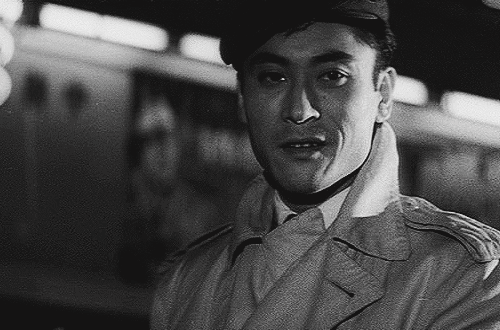


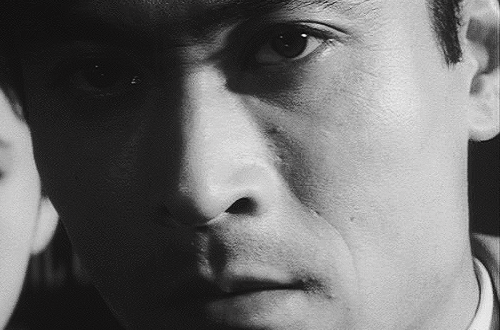




Shigeru Amachi as Kôji Machida in Black Line (1960) dir. by Teruo Ishii
74 notes
·
View notes
Photo
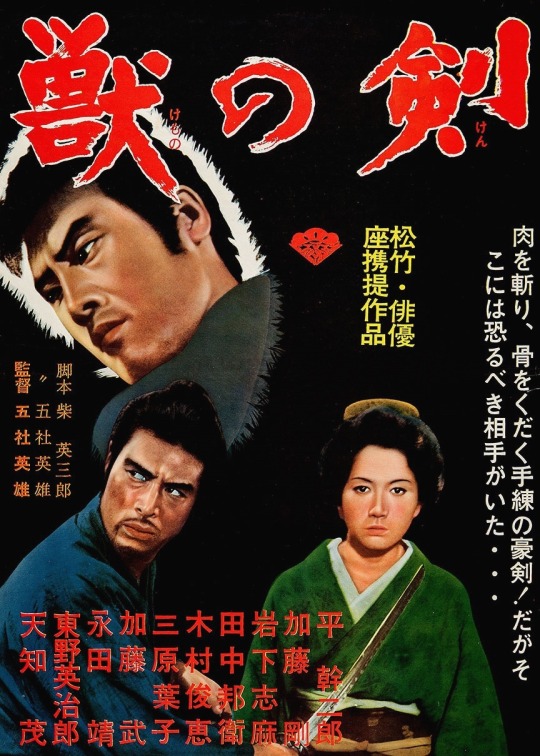
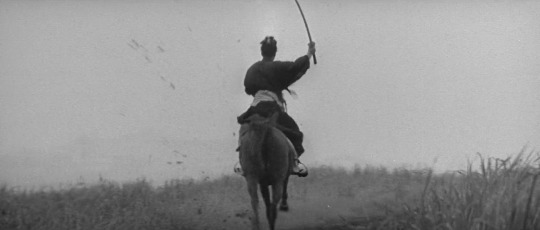






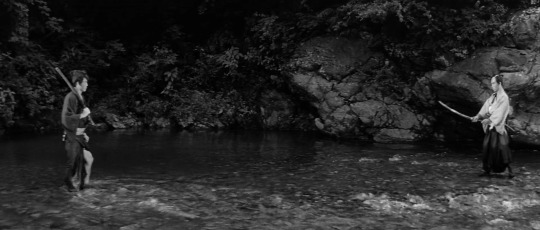

Sword of the Beast / Kedamono no ken (1965, Hideo Gosha)
獣の剣 (五社英雄)
6/5/23
#Sword of the Beast#Kedamono no ken#Hideo Gosha#Mikijiro Hira#Shima Iwashita#Go Kato#Toshie Kimura#Kantaro Suga#Yoko Mihara#Kunie Tanaka#Eijiro Tono#Shigeru Amachi#60s#Japanese#drama#action#chanbara#samurai#jidaigeki#Japanese New Wave#gold#mountains#fugitives#gold prospecting#corruption#river#assassination#social commentary
5 notes
·
View notes
Text
Yellow Line (1960)

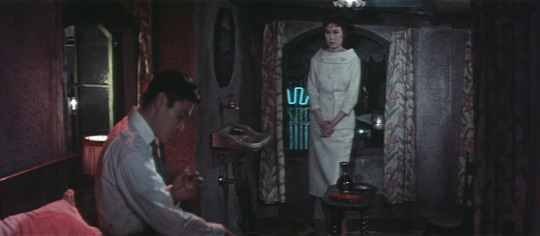





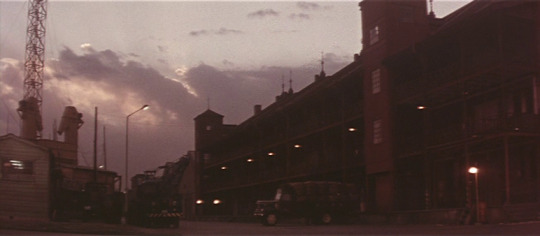
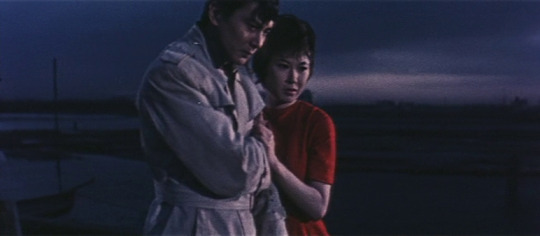
黄線地帯 イエローライン Yellow Line (1960)
directed by Teruo Ishii
cinematography by Hiroshi Suzuki
#黄線地帯 イエローライン#yellow line#teruo ishii#japanese cinema#japanese film#film noir#stills#1960s#shigeru amachi#yōko mihara
19 notes
·
View notes
Text
On April 9, 2006 The Ghost of Yotsuya was screened at the Hong Kong International Film Festival.


#the ghost of yotsuya#the ghost of yotsuya 1959#tokaido yotsuya kaidan#nobou nakagawa#shigeru amachi#horror art#horror movies#horror film#horror#japanese horror#japanese film#japanese cinema#supernatural horror movies#supernatural horror film#supernatural horror#ghost film#ghost movies#tcm underground#movie art#art#drawing#movie history#pop art#modern art#pop surrealism#cult movies#portrait#cult film
2 notes
·
View notes
Text
Now watching:

0 notes
Photo
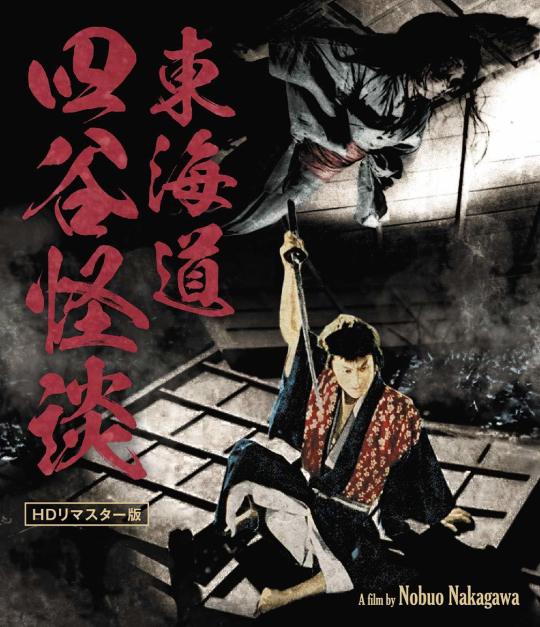
Films Watched in 2023:
56. 東海道四谷怪談/The Ghost of Yotsuya (1959) - Dir. Nobuo Nakagawa
#東海道四谷怪談#The Ghost of Yotsuya#Nobuo Nakagawa#Shigeru Amachi#Noriko Kitazawa#Katsuko Wakasugi#Shuntarô Emi#Ryûzaburô Nakamura#Runko Ikeuchi#Jun Ôtomo#Films Watched in 2023#My Post
1 note
·
View note
Text
O Conto de Zatoichi (1962), dir. Kenji Misumi.
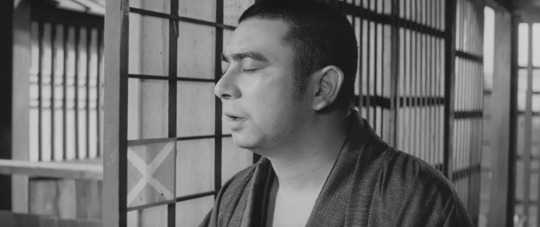



Review originalmente postada: 09/Fev/2023 no Letterboxd.
Devo confessar que fui pego de surpresa, tinha um pré-conceito sobre a franquia do Zatoichi, pelo simples fato de ter tantos filmes, achava que era só filmes baratos de samurai para ganhar dinheiro fácil. Felizmente dei uma chance, percebi que é muito mais do que isso.
O filme tem uma ótima fotografia, com enquadramentos que exploram a cegueira do Zatoichi de maneira muito criativa. E não tem essa de filme barato, a produção foi autêntica em recriar um Japão do período Edo. Um dos elementos mais fortes do filme é a atuação do Shintaro Katsu, que tem uma presença que faz jus em encarnar um personagem em tantos filmes.
Outra parte que gostei, é sempre legal de ver como a Yakuza era no Período Edo, era um temor e respeito por samurais, mesmo que samurais estivessem em decadência nesse período. Um exemplo é mesmo um chefe Yakuza com 60 yakuzas do seu lado, temia lutar contra apenas 1 samurai.
#Zatoichi Monogatori#The Tale of Zatoichi#Zatoichi#O-Tane#Miki Hirate#Shintaro Katsu#Masayo Banri#Shigeru Amachi#chambara#jidaigeki#samurai#ronin#yakuza#cinema#movie#japan movies#movies#japan cinema#japanese cinema#kenji misumi#love and tragedy
1 note
·
View note
Text

Shigeru Amachi in Jigoku (Nobuo Nakagawa, 1960)
Cast: Shigeru Amachi, Utako Mitsuya, Yoichi Numata, Hiroshi Hayashi, Jun Otomo, Akiko Yamashita, Kiyoko Tsuji, Fumiko Miyata, Akira Nakamura, Kimie Tokudaiji, Akiko Ono, Hiroshi Izumida. Screenplay: Nobuo Nakagawa, Ichiro Miyagawa. Cinematography: Mamoru Morita. Production design: Shosuke Sasane, Haruyasu Kurosawa. Film editing: Toshio Goto. Music: Michiaki Watanabe.
I know what hell is: listening to elevator music interrupted by assurances that "your call is important to us" while on infinite hold. Which is not the idea that director Nobuo Nakagawa and co-screenwriter Ichiro Miyagawa present. It's pretty much the traditional one of fire and torture. Jigoku is a cult film, as many of the better (or at least more arty) horror films become, and while I'm not a member of the cult I can appreciate the skill with which Nakagawa presents his vision. It's a movie that ranges from deeply somber to extraordinarily lurid. The protagonist, Shiro (Shigeru Amachi), is a student who, after celebrating his engagement to Yukiko (Utako Mitsuya), gets into a car driven by his sardonic friend Tamura (Yoichi Numata). On a dark road, Tamura runs down and kills a gangster, Kyoichi (Hiroshi Izumida), whose mother (Kiyoko Tsuji) witnesses the accident. Shiro wants to stop, but Tamura keeps driving. Since her son was a gangster, she doesn't report the hit-and-run to the police but, along with Kyoichi's girlfriend, Yoko (Akiko Ono), vows to hunt down Tamura and Shiro and kill them. After pleading with Tamura, Shiro decides to go to the police himself, but on the way the taxi driver -- whom Shiro briefly hallucinates as Tamura -- runs into a tree and Yukiko, who has reluctantly accompanied Shiro, is killed. Shiro's road to hell is certainly paved with good intentions, and after his death he winds up there. He has received a telegram that his mother is critically ill, so he goes to see her at the home for the elderly that his father runs in the country. She's not as ill as he feared -- the telegram was actually sent by Kyoichi's mother and girlfriend to lure him into their trap. He discovers that the old folks' home his father owns is actually run on the cheap, with a doctor who skimps on medicine and food. He also encounters Sachiko, a young woman who looks exactly like his fiancée, Yukiko, down to the pink parasol she carries. She turns out to be the sister Shiro didn't know he had, but by this time revelations are coming hard and fast: Tamura -- who appears more and more demonic -- turns up too, as do the potential assassins, and in an elaborate concoction of circumstances, everybody dies, including Shiro. And everybody goes to hell, which is a fantasia crafted out of depictions from old Buddhist paintings and traditional cinematic imaginings of the underworld. Shiro learns there that the taxi accident killed not only Yukiko but also their unborn child, and he spends much of his time trying to rescue the infant from the torments of the afterlife. The film ends, after much exploration of the more gruesome torments of hell, with Shiro's vision of the twinned Yukiko and Sachiko, both with pink parasols, but although it suggests Faust being redeemed by Gretchen, there's nothing to indicate that this is any kind of redemption for Shiro. In short, Jigoku is complicated, contrived, confusing, sometimes a little cheesy and more than a little morally questionable -- does Shiro really deserve to go through all this? -- but also thoroughly fascinating.
0 notes
Photo

ZATOICHI MONOGATORI aka THE TALE OF ZATOICHI
Released April 12, 1962.
The first of a series of 25 films that ran from 1962 through 1973, followed by a 100-episode television series, and a final film in 1989, all starring the inimitable Shintaro Katsu as Zatoichi the blind swordsman.
This film is more deliberately paced than the bulk of the series. However, It does a wonderful job of introducing Ichi and the world he lives in. Many of the mainstays of the series are seen here for the first time: Ichi winning at dice despite his blindness, Ichi’s intolerance for yakuza who trod all over the common folk, Ichi’s lightning-fast swordplay, and his strong sense of justice.
The film is loosely based on a short story from 1948 by Kan Shimozawa. That story gave the reader just the barest details about Zatoichi,; he’s more of a mystery than anything else. Luckily, Katsu-san was up to the challenge of fleshing the character outing bringing him fully to life.
The film - and Ichi himself - proved to be so popular that the sequel, The Tale of Zatoichi Continues (Zoku Zatoichi Monogatori) was released exactly six months later.
#Zatoichi Monogatori#The Tale of Zatoichi#Zatoichi#O-Tane#Miki Hirate#Shintaro Katsu#Masayo Banri#Shigeru Amachi#chambara#jidaigeki#samurai#ronin#yakuza
27 notes
·
View notes
Audio
It is yet another TOKAIDO YOTSUYA KAIDAN (1959), but this time from experienced horror director Nobuo Nakagawa!
Balancing a return to its kabuki roots with a forward-looking use of colour and surrealism, this horror takes your hosts by storm! The film stars Shigeru Amachi, Katsuko Wakasugi and Shuntaro Emi.
Context setting 00:00; Synopsis 28:53; Discussion 44:01; Ranking 1:00:54
#podcast#horror#japanese horror#yotsuya kaidan#tokaido yotsuya kaidan#nobuo nakagawa#shigeru amachi#katsuko wakasugi#shuntaro emi#ryuzaburo nakamura#noriko kitazawa#jun otomo#masayoshi onuki#yoshihiro ishikawa#nanboku tsuruya#mitsugu okura#tadashi nishimoto#shintoho#the ghost of yotsuya
5 notes
·
View notes
Text
Jigoku (dir. Nobuo Nakagawa)
-Jere Pilapil- 7/10
Nobuo Nakagawa’s Jigoku is a cornerstone of horror, in a way. You can see its influence, arguably, in works like Hausu or even Evil Dead II (which I also watched last night). As a morality tale, it’s a bit slight, but as a work of imagination and special effects, it’s pretty amazing that Nakagawa achieved this in 1960.
The movie stars Shigeru Amachi as Shirō, a student, and Yōichi Numata his acquaintance Tamura. Tamura drives Shirō home one night, committing a hit and run that haunts Shirō for the rest of the movie. It sets off a domino effect of sorts: the hit and run victim’s girlfriend and mother scheme up some revenge against Shirō, and his guilt and bad luck cause irreparable damage to those around him. Not only that, but the ulterior motives and immoral decisions of those around him have disastrous effects for everyone.
The majority of Jigoku’s runtime is spent in a kind of hell-on-earth, where Shirō‘s life is turned upside down by death and betrayal. The characterizations are all a bit thin - Shirō is sad but passive, Tamura an unhinged agent of chaos - so spending that much time on what amounts to domestic melodrama is entertaining but slight. It’s all a preamble, though, for when the movie moves on to a literal hell, one that competes with Pasolini’s The Canterbury Tales for inventive depictions of hell (granted, in different religious visions). In this final act, it becomes a true horror movie and earns its cult status as Nakagawa and co-writer Ichirō Miyagawa unleash some truly creative tortures upon the afterlife’s residents.
All in all, this is an uneven but worthwhile entry into cult fandom. Unfortunately, like many horror movies, the best of it is tucked away in the final act while the majority of the movie shuffles along with midlevel drama. Numata’s performance as Tamura is incredible; as one dimensional as his character is, his mischievous spirit feels like the third act trying to break into the first two. It’s a spark of energy needed while Shirō is in his feelings.
0 notes
Photo


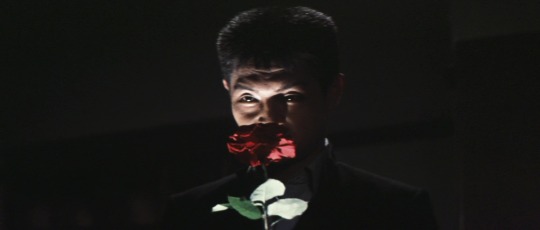





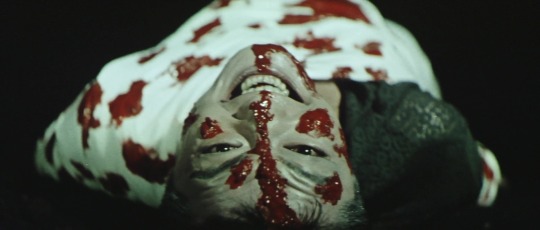

Jigoku (1960, Nobuo Nakagawa)
Also known as: The Sinners of Hell
地獄 (中川信夫)
10/2/22
#Jigoku#The Sinners of Hell#Nobuo Nakagawa#Shigeru Amachi#Utako Mitsuya#Yoichi Numata#Hiroshi Hayashi#Jun Otomo#Akiko Yamashita#Kiyoko Tsuji#60s#Japanese#horror#crime#hell#afterlife#underworld#Buddhism#guilt#murder#manslaughter#hit and run#deception#gore#torture#demons#death#mythology#color
14 notes
·
View notes
Photo








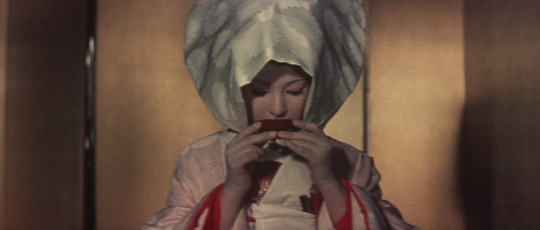
Films watched in 2021.
275: The Ghost of Yotsuya (Nobuo Nakagawa, 1959)
★★★★★★☆☆☆☆
#Films watched in 2021#The Ghost of Yotsuya#Nobuo Nakagawa#seis#1959#Tôkaidô Yotsuya kaidan#tokaido yotsuya kaidan#horror#ghost#ghosts#Katsuko Wakasugi#Shigeru Amachi#Noriko Kitazawa#j-horror#j horror#samurai#tea#blood#snake#long shot
197 notes
·
View notes
Text
On October 28, 2010 The Ghost of Yotsuya was screened at the Mumbai Film Festival.


Here's some new art to mark the occasion!
#the ghost of yotsuya#tokaido yotsuya kaidan#nobuo nakagawa#shigeru amachi#horror art#horror film#horror movies#horror#japanese horror#japanese film#tcm underground#supernatural horror movies#supernatural horror#cult cinema#cult classic#cult movies#movie art#art#drawing#movie history#pop art#modern art#pop surrealism#portrait#cult film#new art#new fan art
2 notes
·
View notes